Bora Bora
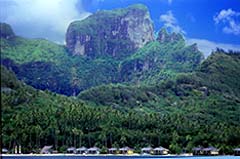 A towering volcanic pinnacle commands the center of Bora Bora. Rising out of the depth, the fringing reef protects the island from the constant force of the ocean. The inner lagoon is a safe haven for fish, sharks and the friendly manta rays. It is only 150 miles (240 kms) from Tahiti plus a short and very scenic boat ride from the airport.
A towering volcanic pinnacle commands the center of Bora Bora. Rising out of the depth, the fringing reef protects the island from the constant force of the ocean. The inner lagoon is a safe haven for fish, sharks and the friendly manta rays. It is only 150 miles (240 kms) from Tahiti plus a short and very scenic boat ride from the airport.
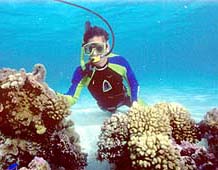
Michel and the divers of the Bora Diving Center took us to find the manta rays in the lagoon or out Teavanui Pass to look for lemon sharks. Diving in Bora Bora is focused in seven areas. The most frequently visited are Anau Manta, Tapu which is south of the pass, Muri Muri also known as White Valley and South Point if weather permits. Sharks and manta rays can be seen both inside and outside the lagoon.
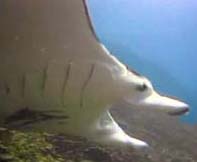 Each morning we visit the channel south of Maltra Point to dive with the mantas. With wingspans of up to 12 feet, these gentle creatures approach the suspended divers with interest. A recent evolution from the shark family, manta rays appear to possess a keen intelligence that includes both short-term and long-term memory. Divemasters recognize individual mantas based on their markings and vice versa.
Each morning we visit the channel south of Maltra Point to dive with the mantas. With wingspans of up to 12 feet, these gentle creatures approach the suspended divers with interest. A recent evolution from the shark family, manta rays appear to possess a keen intelligence that includes both short-term and long-term memory. Divemasters recognize individual mantas based on their markings and vice versa.
Bora Bora has a resident population of about 24 manta rays. Six females were identified as pregnant in 1999. Although the birth of a manta ray has never been filmed, over the last few years, a Japanese film crew has been spending large amounts of money trying. A friendly manta ray named "Baby," is very fond of being rubbed. Groups of up to 8 mantas have been seen at one time.
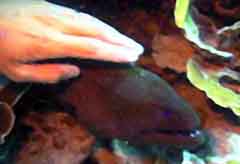
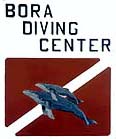
Diving outside Teavanui Pass along the outer lip of the fringing reef is excellent with 200-foot visibility at times. Several types of sharks including grey reef, blacktip, whitetip lagoon, longnose reef and the large lemon sharks can be seen. The waters are also alive with fish including the pesky pyramid butterflyfish, black butterflyfish, paddle snapper, yellow snapper, convict tangs, and triggerfish. The list goes on and is too long to mention all.
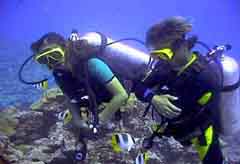
Scuba diving is good all year round in French Polynesia. The best diving conditions are between April and November. Bora Bora has many of the large animals such as sharks and manta rays but the highlights are the enormous numbers of tropical fish.
With four boats, the Bora Diving Center can provide rapid access to any of the various dive sites. They also have six fully-qualified instructors and can provide PADI, and CMAS certification courses.
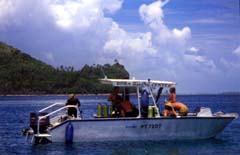
Bora Bora is a major tourist destination and has many fine hotels and restaurants. The restaurant at the Bora Bora Hotel serves excellent French cuisine although expensive and should be reserved for that special meal.
The Cybercafe in Vaitape offers fine pastries and coffees and is open early for a before diving breakfast. The road circles the islands making accessible other restaurants and wonderful views. What sets Bora Bora apart from other French Polynesian islands is its spectacular above-water scenery. Add the underwater world and one has a world-class dive destination.
